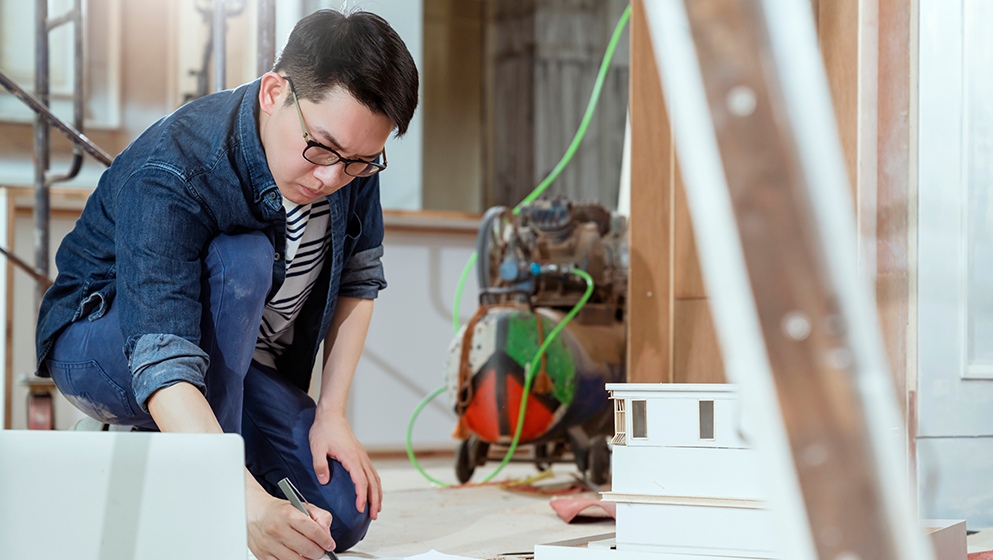The process of purchasing a home can be overwhelming for first-time buyers, particularly when it comes to inspecting the property for potential issues. In order to ensure a sound investment, it is crucial to conduct a thorough home inspection before finalizing the purchase.
This article aims to provide first-time buyers with a comprehensive guide on the top 10 home inspection tips. By following these guidelines, buyers will be equipped with the knowledge to:
- Assess the structural integrity of the house.
- Evaluate the roof and gutters.
- Inspect the plumbing system.
- Assess the electrical system.
- Examine the HVAC system.
These tips will help buyers identify any potential issues or red flags that may affect the value or safety of the property. It is important to note that while these tips provide a good starting point, it is always recommended to hire a professional home inspector for a thorough evaluation.
The objective of this article is to provide an informative and professional resource for first-time buyers, enabling them to make informed decisions and avoid potential pitfalls in the home buying process.
Assess the Structural Integrity of the House
Assessing the structural integrity of a house is a critical step in the home inspection process, ensuring that potential first-time buyers are aware of any potential issues that may affect the durability and safety of the property. Common signs of structural issues include:
- – Cracks in the walls or foundation
- – Sloping floors
- – Uneven door frames
- – Visible gaps between walls and ceilings
These signs may indicate problems with the foundation, load-bearing walls, or overall structural stability. It is essential to address these issues promptly as they can lead to more significant problems and costly repairs in the future.
Professional inspection is of utmost importance when assessing the structural integrity of a house. While some issues may be visible to the untrained eye, a professional inspector can provide a comprehensive evaluation of the property’s structural condition. They have the knowledge and expertise to identify potential problems and recommend appropriate solutions. Additionally, they can assess the extent of the damage and estimate the costs involved in repairs or renovations.
Moving forward, it is crucial to evaluate the roof and gutters to ensure the overall condition of the house.
Evaluate the Roof and Gutters
When evaluating the roof and gutters of a house, it is important to look for missing or damaged shingles. This can indicate potential leaks and water damage.
Additionally, it is crucial to check for proper drainage and functioning gutters to ensure that water is effectively directed away from the house, preventing foundation problems and water intrusion.
Assessing these key points will help in determining the overall condition and maintenance needs of the roof and gutters.
Look for Missing or Damaged Shingles
Inspecting the roof for missing or damaged shingles is imperative in order to identify potential issues and make informed decisions as a first-time homebuyer. Roof maintenance is crucial for the overall integrity of the house, and shingle repair is a key aspect of it.
When inspecting the roof, look for any shingles that are missing, cracked, or curling. These issues can lead to water leaks and further damage to the underlying structure. Missing or damaged shingles can also be a sign of poor installation or inadequate maintenance.
It is important to address these issues promptly to prevent any potential water damage or costly repairs in the future. Additionally, by checking for proper drainage and functioning gutters, you can ensure that water is effectively directed away from the roof and the foundation of the house, thus preserving its structural integrity.
Check for Proper Drainage and Functioning Gutters
To ensure the long-term structural integrity of the house, it is crucial to carefully evaluate the drainage system and gutters for proper functionality.
Proper grading is essential to ensure that water flows away from the foundation, preventing water damage and potential foundation issues.
It is important to inspect the gutters for any signs of damage or blockage, as they play a vital role in directing water away from the house.
Additionally, it is imperative to check for waterproofing measures around the foundation, such as proper sealing and the presence of a functioning sump pump if applicable.
By assessing the drainage system and gutters, homeowners can prevent water-related problems that may lead to costly repairs in the future.
Moving forward, it is equally important to inspect the plumbing system to ensure its efficiency and functionality.
Inspect the Plumbing System
The condition and functionality of the plumbing system should be carefully evaluated during the home inspection process to ensure that there are no hidden issues that could potentially cause costly repairs in the future.
One important aspect to consider is water pressure. Low water pressure can be indicative of various problems, such as clogged pipes or leaks. Therefore, it is crucial to check the water pressure in all faucets and showers throughout the house.
Additionally, leak detection is another key element when inspecting the plumbing system. Even a small leak can lead to significant water damage over time, so it is essential to examine all visible pipes, fixtures, and the water meter for any signs of leakage.
Furthermore, a thorough examination of the water heater should be conducted to ensure it is in good working condition.
Finally, it is important to assess the overall functionality of the plumbing system, including the proper drainage of sinks, toilets, and tubs. By conducting a comprehensive inspection of the plumbing system and addressing any issues found, potential buyers can avoid unexpected repair expenses.
Moving on to the next section, it is equally important to assess the electrical system to ensure the safety and functionality of the home.
Assess the Electrical System
A thorough evaluation of the electrical system is essential to ensure the safety and proper functioning of the property. Electrical safety measures should be a top priority for first-time home buyers during the inspection process. It is crucial to assess the electrical system to identify any potential hazards or deficiencies that may exist.
Common electrical issues that should be examined include:
- – Outdated wiring, which can pose a fire hazard
- – Overloaded circuits, which can lead to power outages or electrical fires
- – Faulty outlets or switches, which may indicate improper wiring or potential electrical problems
Additionally, it is important to check if the electrical system meets the current building codes and regulations. This evaluation will provide valuable information about the state of the electrical system and any necessary repairs or upgrades that may be required.
Moving forward, the next important step is to examine the HVAC system and ensure its proper functioning and maintenance.
Examine the HVAC System
In addition to assessing the electrical system, it is equally important for first-time home buyers to examine the HVAC (Heating, Ventilation, and Air Conditioning) system.
Firstly, it is crucial to test the heating and cooling systems to ensure they are functioning properly. This involves checking the thermostat, inspecting the air filters, and ensuring the system is distributing conditioned air effectively.
Secondly, it is important to check for proper ventilation and airflow throughout the house. This includes examining the ductwork, inspecting the vents and registers, and ensuring there are no blockages or obstructions that could impede the airflow.
By thoroughly examining the HVAC system, first-time buyers can ensure they are investing in a home with a reliable and efficient heating and cooling system.
Test the Heating and Cooling Systems
Assessing the functionality of heating and cooling systems is essential when conducting a home inspection for first-time buyers. To determine the efficiency of the heating system, evaluate the age, condition, and type of the furnace or boiler. Consider the Annual Fuel Utilization Efficiency (AFUE) rating, which indicates the energy efficiency of the system.
Additionally, check for any signs of inadequate heating, such as cold spots or inconsistent temperatures throughout the house. To ensure proper cooling system maintenance, inspect the air conditioner unit for any visible damage or leaks. Check the age and condition of the unit, and consider the Seasonal Energy Efficiency Ratio (SEER) rating to assess its energy efficiency.
Lastly, test the functionality of both heating and cooling systems by turning them on and monitoring their performance. Adequate heating and cooling systems are crucial for a comfortable living environment. Moving forward, it is also important to check for proper ventilation and airflow.
Check for Proper Ventilation and Airflow
Proper ventilation and airflow are essential factors to consider when inspecting a home, especially for first-time buyers.
The importance of proper ventilation cannot be overstated, as it affects the overall air quality and comfort within the house. Inadequate ventilation can lead to a buildup of moisture, odors, and pollutants, which can negatively impact the health and well-being of the occupants.
It is crucial to assess the ventilation system in place and ensure that it is functioning correctly. Common ventilation problems in homes include blocked or poorly maintained air ducts, inadequate exhaust systems in kitchens and bathrooms, and improper installation of ventilation fans.
Identifying and addressing these issues during a home inspection is vital to ensure a healthy and comfortable living environment for the future homeowners.
Conclusion
Top 10 Home Inspection Tips for First-Time Buyers:
- Schedule a professional home inspection: Hiring a certified home inspector will provide an unbiased assessment of the property’s condition.
- Research the inspector: Look for an inspector with experience and good reviews to ensure a thorough and reliable inspection.
- Attend the inspection: Being present during the inspection allows buyers to ask questions and gain a better understanding of any issues.
- Assess the structural integrity: Look for signs of foundation problems, such as cracks or sloping floors, which can be costly to repair.
- Evaluate the roof and gutters: Inspect the roof for any signs of damage or leaks, and check the gutters for debris or blockages.
- Inspect the plumbing system: Look for leaks, water pressure issues, and signs of water damage in bathrooms, kitchens, and basements.
- Examine the electrical system: Ensure that all outlets, switches, and light fixtures are functioning properly, and check for outdated wiring or electrical hazards.
- Evaluate the HVAC system: Test the heating and cooling systems to ensure they are in good working condition, and assess the age and maintenance history of the equipment.
- Check for signs of water damage: Look for stains, mold, or musty odors, as these can indicate hidden water damage or plumbing issues.
- Review the inspection report: Carefully read the detailed inspection report, which will outline any issues or concerns found during the inspection.
By following these home inspection tips, first-time buyers can make informed decisions and negotiate repairs or adjustments before finalizing the purchase. A thorough home inspection is an essential step in the home-buying process, ensuring that buyers are making a wise investment.





